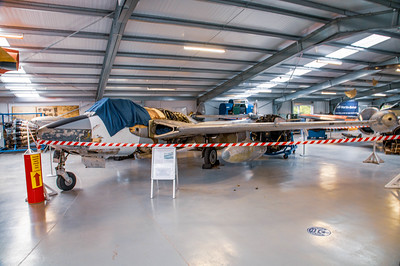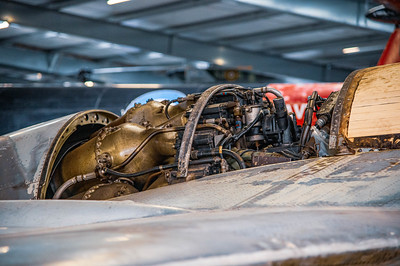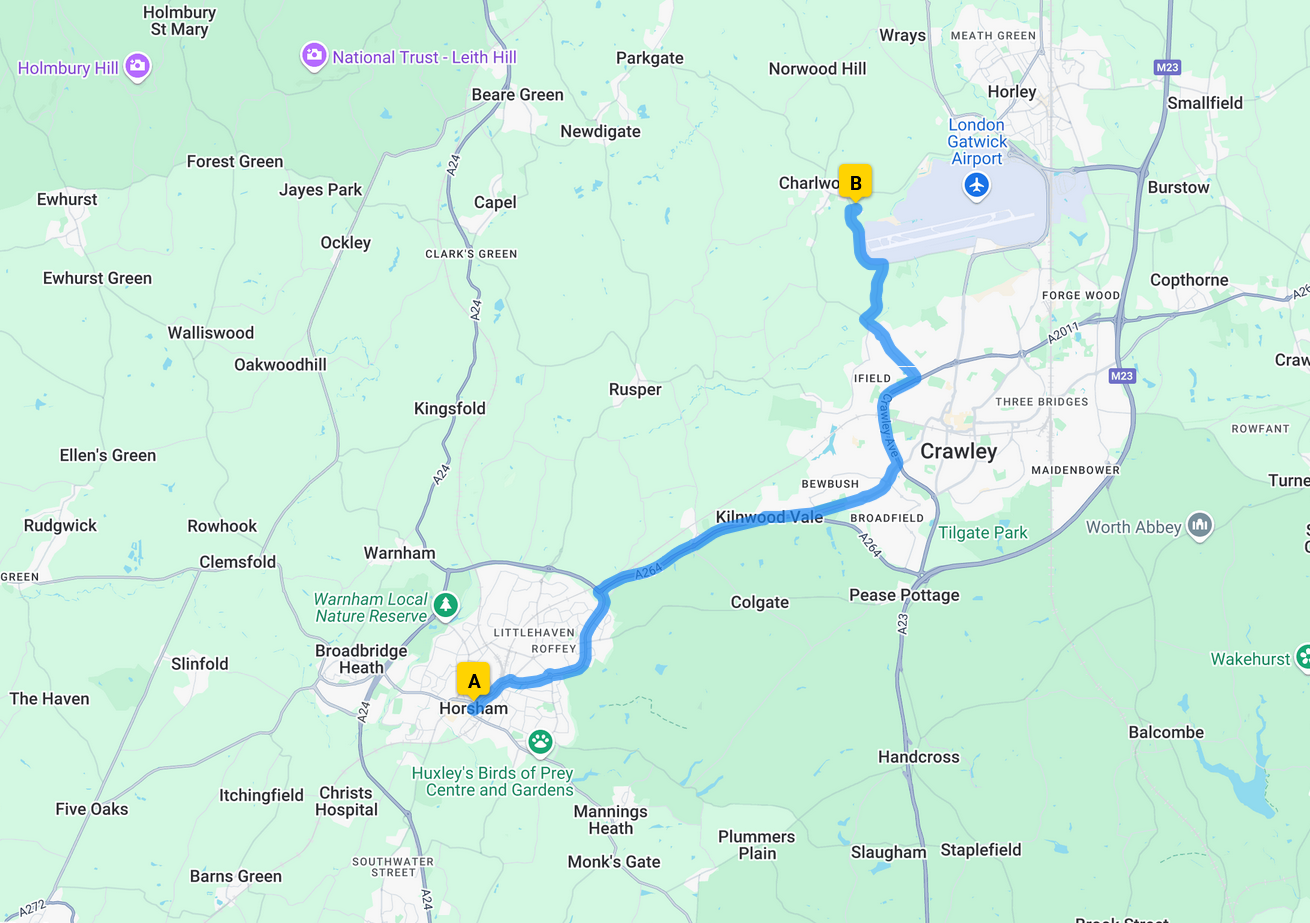Gloster Meteor T.7 VZ638
Gloster Meteor T.7 VZ638 rolled off the Gloster production line at Hucclecote on 29 July 1949. As a two-seat training variant of Britain’s first operational jet fighter, it carried RAF serial VZ638 throughout its military career.
Upon acceptance, VZ638 joined No. 500 “County of Kent” Squadron and later served with Nos. 25, 54 and 85 Squadrons. It finished its flying days as a trainer with No. 501 “County of Gloucester” Squadron and 237 OCU at RAF College Cranwell
After withdrawal and storage at RAF Kemble, VZ638 was sold on 12 January 1972 to the British Historical Aircraft Museum at Southend. In May 1983 it moved to the Brencham Historic Aircraft Company at Hurn, then to Aces High at North Weald in October 1987. Peter G. Vallance of Vallance By-Ways acquired it in July 1988 and registered it G-JETM; that registration remained until 15 December 2009.
Formally added to the Gatwick Aviation Museum collection on 19 July 1991, Meteor T.7 VZ638 (civil reg. G-JETM) has been on static display in Charlwood, Surrey, ever since — photos as recent as 2014 show it intact in its original trainer markings.
Key aspects of the Gloster Meteor
The Gloster Meteor holds a significant place in aviation history as Britain's first operational jet fighter and the only Allied jet aircraft to see combat during World War II.
- Pioneering Jet Technology: Its development was intertwined with the pioneering work of Frank Whittle on the turbojet engine. The Meteor was a direct result of British efforts to harness jet propulsion for military aircraft.
- Wartime Service: It entered service with the RAF in July 1944, initially with No. 616 Squadron. Its primary role during WWII was intercepting and destroying German V-1 flying bombs (buzz bombs) over Britain. Due to the secrecy surrounding jet technology, it saw limited direct combat with German fighter aircraft.
- Post-War Versatility and Longevity: The Meteor's story didn't end with WWII. It underwent continuous development, leading to numerous variants with improved performance and capabilities.
It served as
- Day fighter: Later marks, like the F.8, became the backbone of Britain's air defense in the early Cold War.
- Night fighter: Specialized night fighter variants (NF.11, NF.12, NF.13, NF.14) were produced by Armstrong-Whitworth, equipped with radar.
- Trainer: The T.7 was a two-seat trainer widely used to transition pilots to jet aircraft.
- Photo Reconnaissance: The PR.10 was an unarmed reconnaissance version.
- Target tugs and drone platforms: Some Meteors were converted for these roles, extending their operational life.
- Testbed aircraft: Its robust design made it suitable for various experimental programs, including testing ejection seats (famously with Martin-Baker) and even a "prone pilot" configuration to study G-force effects.
- Global Service: Thousands of Meteors were built and exported to numerous air forces around the world. The Royal Australian Air Force (RAAF) notably used Meteor F.8s in combat during the Korean War, where they primarily performed ground attack missions after being outclassed in air-to-air combat by the newer MiG-15s.
- Performance: While early models were relatively underpowered, engine development significantly improved its performance. Later variants could achieve speeds approaching 600 mph (965 km/h) and had improved climb rates and service ceilings.
References
Text generated by Microsoft CoPilot Text generated by Mistral AI Text generated by Google's Gemini AI
- 1. plane-crazy.k-hosting.co.uk
- 2. Wikipedia
- 3. martin-baker.com
- 4. www.awm.gov.au
- 5. www.warbirdsresourcegroup.org
- 6. www.youtube.com
- 7. www.aerialvisuals.ca
ABPic>

































